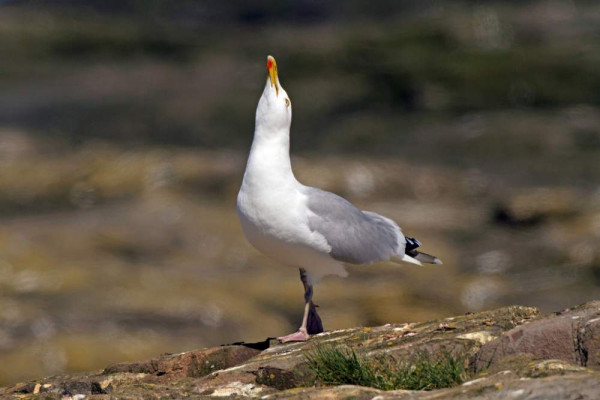Topics
Our seabirds
Britain and Ireland host globally important breeding populations of seabirds; in total over 8 million birds of 25 species at the time of the last national census. However, seabirds are facing growing pressures, from climate change to increasing exploitation of the marine environment, and are among the world’s most threatened groups of birds. BTO is working with partners both to support effective monitoring of seabirds and to assess the pressures they face, so that appropriate conservation solutions can be found.

Monitoring seabirds in partnership
Of Britain and Ireland’s 25 breeding seabird species, six are on the UK Birds of Conservation Concern Red List and a further 18 are Amber-listed, while three and 19 are on the equivalent lists of Birds of Conservation Concern in Ireland. Monitoring these vulnerable populations is critical in informing national and international reporting on their status, as well as achieving targeted and effective conservation action. Citizen science plays a vital role in this monitoring. BTO is committed to working with its partners to identify and prioritise the developments that will ensure a robust and secure long-term future for seabird monitoring in these islands. By doing so, our aims are that seabird monitoring should provide:

- The highest quality evidence on the status of seabird populations (at site and national levels) that informs national and international policy;
- An understanding of the responses of seabird populations to environmental change;
- A growing constituency of people, across professional-amateur-public audiences, that are informed about and contributing to seabird monitoring and research.
BTO is a lead partner in the Seabird Monitoring Programme (SMP). The SMP collects annual data on the breeding abundance and productivity of seabirds from sample sites across Britain and Ireland. Through the BTO’s Retrapping for Adult Survival (RAS) scheme and studies at key sites, breeding seabirds are also ringed to provide additional information on annual survival rates. By investigating the factors that affect these demographic parameters, we are able to improve understanding of the drivers of seabird population change. The populations of seabird species in Britain and Ireland are assessed through periodic censuses and BTO is supporting the current seabird census – ‘Seabirds Count’.
Seabirds are facing growing pressures, from climate change to increasing exploitation of the marine environment, and are among the world’s most threatened groups of birds.
Providing evidence to reduce impacts
The marine environment faces increasing pressure from development, including from offshore renewable energy projects, which are playing an increasing role in governments’ strategies to address climate change. Both in the UK and internationally, BTO works with government, NGO stakeholders and industry to ensure that the best possible scientific evidence and advice is available to assess the potential impacts on seabirds of such developments. BTO research has led to design improvements that reduce the risk of collision with wind turbines for seabirds. In this country, the data collected by the SMP, RAS and periodic censuses are invaluable in informing these assessments. Nevertheless, it may be difficult to detect the changes that may result from such developments through existing monitoring. BTO continues to work with others to improve our ability to detect such impacts, and understand how they may be best reduced.

Avian Influenza Appeal
Many of our breeding seabird colonies were devastated by the current outbreak of avian influenza. We need to monitor the impacts of this deadly outbreak to help our seabirds recover.
Donate todayRelated Publications

Northern Ireland Seabird Report 2021
Fulmars continue to decline across most sites, while large gulls buck the national trends and are increasing across Northern Ireland.
More Details
Review of the potential of seabird colony monitoring to inform monitoring programmes for consented offshore wind farm projects

When is enough enough? Effective sampling protocols for estimating the survival rates of seabirds with mark-recapture techniques
Bird Study

Towards a framework for quantifying the population-level consequences of anthropogenic pressures on the environment: The case of seabirds and windfarms
Assessing the impact of offshore wind farms on seabird populations
Journal of Environmental Management
New research from the BTO has examined the different analytical tools used to assess the likely population-level impact of offshore wind farm developments on seabirds, finding that these vary widely and are influenced to a large extent by the assumptions made at the start of the analysis.
More Details





Share this page